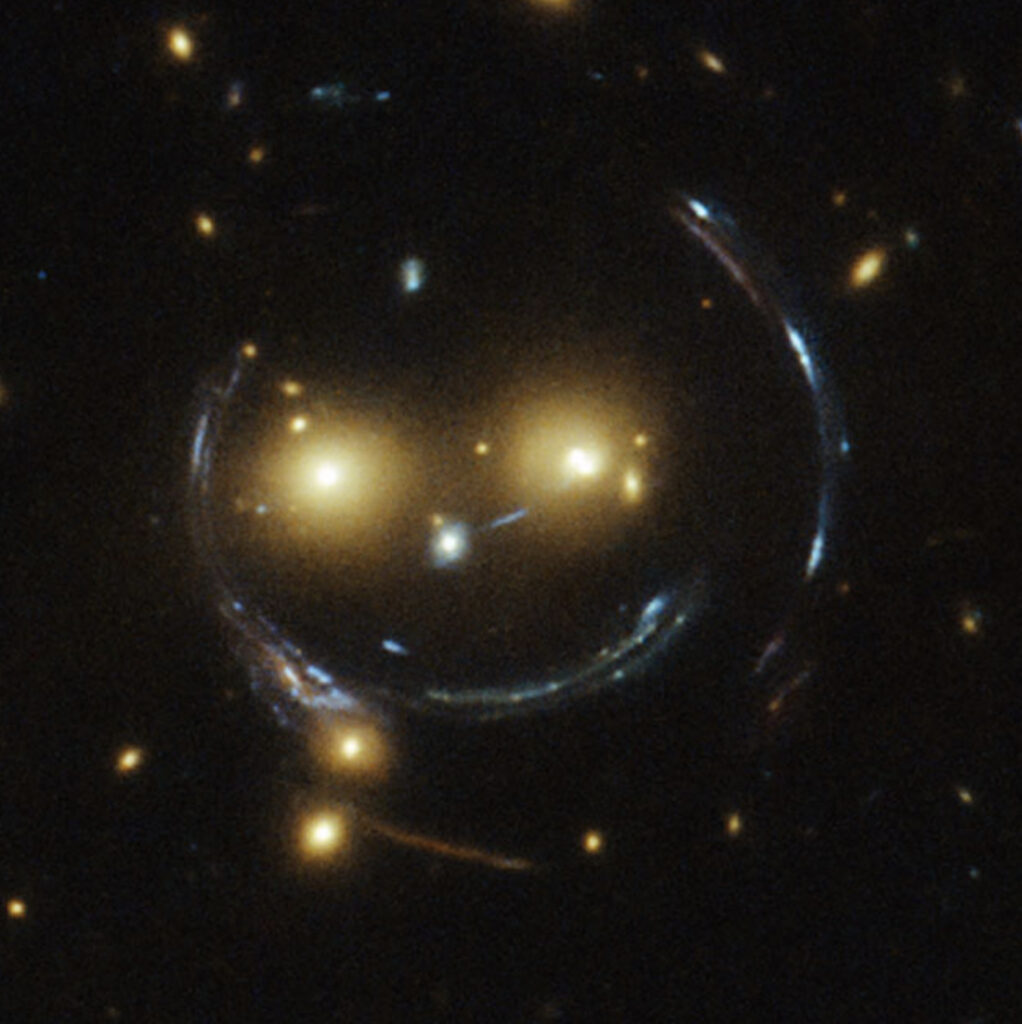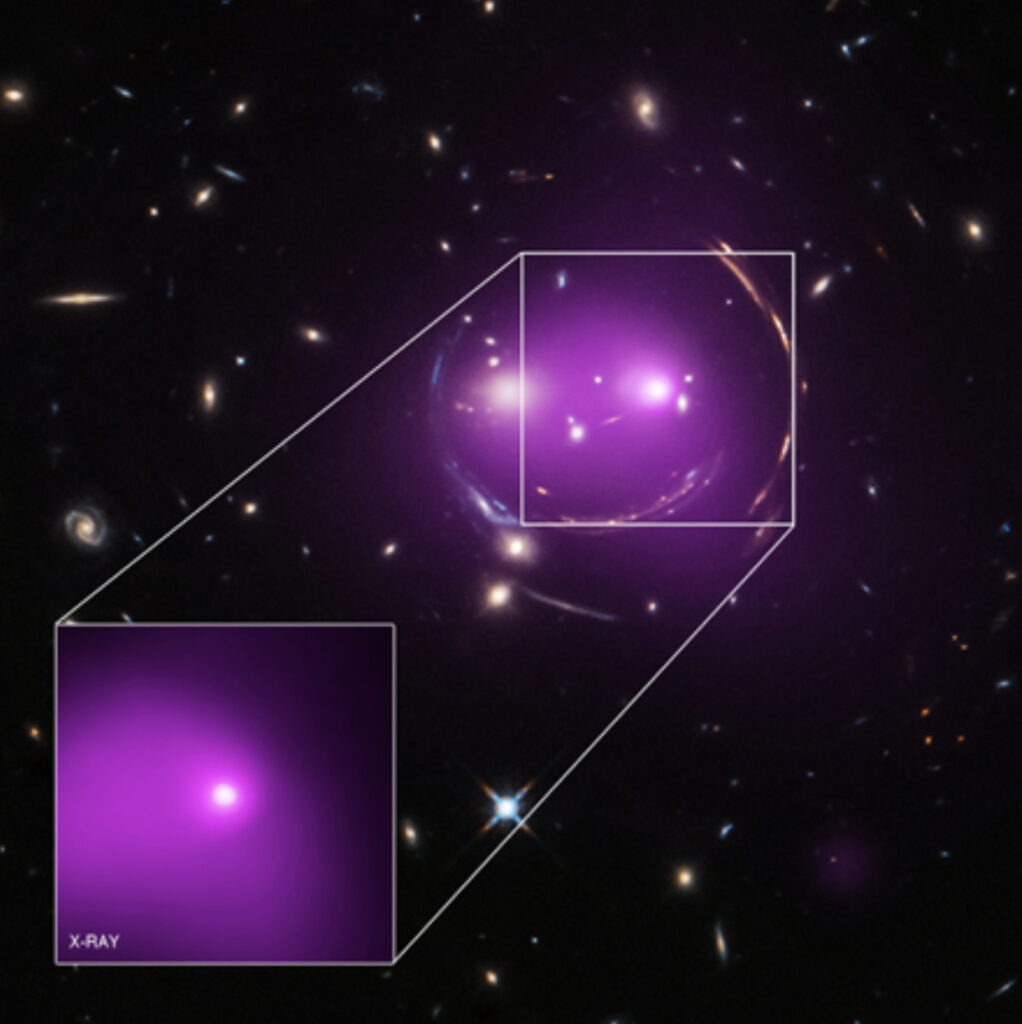
Astronomers have long marveled at the strange and beautiful phenomena that unfold across the cosmos, and the “Cheshire Cat” group of galaxies is no exception. Named for its resemblance to the iconic grinning feline from Alice in Wonderland, this galactic ensemble showcases the bizarre and wondrous effects of gravitational lensing — a striking consequence of Einstein’s general theory of relativity. In this system, the light from distant background galaxies is stretched and curved into arcs and rings by the immense gravity of a foreground galaxy cluster, most of whose mass is composed of invisible dark matter detectable only through its gravitational effects.
The grinning face is anchored by two brilliant “eyes” — the massive elliptical galaxies SDSS J103843.58+484917.7 and SDSS J103842.68+484920.2 — located at redshifts z = 0.426 and z = 0.433, respectively. Between them lies a smaller “nose” galaxy, and surrounding them are multiple arc-like features: distorted images of background galaxies, some at redshifts as high as z = 2.78 — representing objects seen as they were billions of years ago. These arcs are magnified by the gravitational lensing effect, allowing astronomers to peer further into the universe than otherwise possible. These features were captured in breathtaking optical detail by NASA’s Hubble Space Telescope. Complementary X-ray data from NASA’s Chandra X-ray Observatory reveal glowing, million-degree gas and an active supermassive black hole within one of the “eyes” — signs of a high-speed galactic collision underway.

What makes the Cheshire Cat group especially compelling is that it may represent a fossil group progenitor — a rare, transitional phase in galaxy evolution where smaller galaxy groups merge into one massive elliptical galaxy surrounded by fainter companions (Irwin et al., 2015). While fossil groups are believed to be a common outcome of galaxy mergers, catching one in the act is unusual. The Cheshire Cat offers a unique opportunity to study this process in real time, shedding light on the dynamic forces that shape galaxy clusters over cosmic time.
The precise alignment of galaxies in this system also produces a rare and beautiful phenomenon: an Einstein Ring — a nearly perfect circle of light formed when the background galaxy, lensing mass, and observer are aligned just right. These naturally occurring lenses serve as powerful tools in astronomy, enabling the study of galaxies otherwise too faint or distant to observe. In the case of the Cheshire Cat, Einstein’s century-old theory continues to help us see further, deeper, and with more wonder than ever before.
Catalog: GLC-12
Paper: The Cheshire Cat Gravitational Lens: The Formation of a Massive Fossil Group